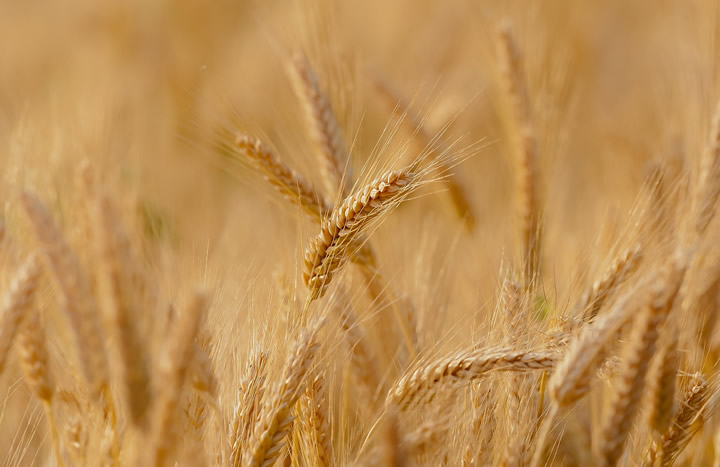DIGITAL TRANSFORMATION IN FARMING: USING TECHNOLOGY TO PROPEL ENVIRONMENTAL PROTECTION

In our fast-paced landscape of immediacy, digital transformation has become a must. According to the International Data Corporation (IDC), digitally-transformed organisations are projected to contribute to over half of global GDP by 2023, accounting for a staggering $53.3 trillion.
The news is full of reasons why digital transformation is needed: time efficiency, cost-saving and user experience, to name a few. The COVID-19 pandemic has only accelerated the need to transform existing processes. Yet, there are significant obstacles to getting there and maximising the benefits of changing systems.
When old project management is engrained, but not working, how do you even begin to adopt new software? Practicalities aside, how can the transition be designed to be cost-effective?
The Zengenti team recently worked on one of the company’s biggest projects to date, with the Ontario Ministry of Agriculture, Food and Rural Affairs (OMAFRA); the provincial Government ministry responsible for the food, agriculture and rural sectors of the province.
Using our agile content management system (CMS), Contensis, the team were able to successfully digitise OMAFRA’s crop protection publications – a fundamental component to the team’s ambitions to become a leader in digital transformation.
Lengthy, complicated guides are now a smart and efficient digital resource. The project is delivering long- term cost savings and will contribute to increased sustainable practices in the province.
The ground to plough
The Food and Agriculture Organisation (FAO) at the United Nations estimates that up to 40 per cent of global agricultural production is lost to pests yearly. Plant diseases alone cause more than 220 billion dollars in damage to the world’s economy annually, while invasive pests incur a cost of at least 70 billion dollars.
Part of OMAFRA’s job is to keep Ontario farmers informed about crop protection methods, principally pesticides. Prior to the implementation of our CMS, the Ministry’s legacy system relied upon the publication, print and distribution of various crop protection guides for farmers throughout the year.
It was by no means an easy feat. 13 print publications, on average over 200 pages long, needing updates every one to two years, translated from English to French and required time to produce.
OMAFRA had identified that the current process could be significantly modernised, while driving forward their plans for innovation. Additionally, digitalization would provide major opportunities for users to access more specific information around pesticide usage, save time out in the field, and drive sustainability through a digital solution.
The data from guides, including that information contained in the Guide to Weed Control which is 75 years old, needed to be migrated to a single source of truth; a digital solution, powered by a comprehensive and workable CMS.
A need for innovation
Implementing a CMS from a print origin is challenging. In this project, we were tasked with identifying a new standard approach for presenting the data, right down to standardising the naming of crops and the measurement values that farmers would understand.
Nothing like this had been done before in Ontario. An innovative and agile approach to push the technology would be required if we were to find the perfect solution tailored to the needs of the client; to produce a straightforward, dynamic and searchable system, in the form of an application that could be accessed anywhere.
In response, we tested the capabilities of the Contensis CMS when handling the number of data points. Each data point had up to 50 fields that could interact with one another, leading to a massive number of calculations. The user interface then had to present the information in a clear and practical way.
Adding to the complexity of the project, OMAFRA needed to meet Ontario’s French language requirements and required the Contensis CMS to provide a workflow for French translation within the system. Language inclusivity is an important and timely topic, particularly as the EU is one of many organisations propelling the need to account for language diversity to make the digital world accessible to everyone. This overarching goal really speaks to our aims as an organisation, as we continuously strive for greater online accessibility.
In this project, we experimented with our language capabilities, accounting for the need of French counterparts. Blocks of text were standardised and reused wherever possible to minimise the amount of translation required. In the past, each print publication would be translated in its entirety; a long and costly process. Now updated information can be translated and released rapidly, in small manageable chunks and with translators working directly in Contensis.
On the ground in Ontario
From our base here in the United Kingdom to the fields of Ontario, the end result is a web-based resource that is easy for farmers to access. The next step is to enhance the system to allow data to be downloaded and saved on the browser until it refreshes. This enhancement will allow the resource to be accessed even without mobile data – essential for farmers working remotely in the fields with limited connectivity.
Without digital tools, previous information became out of date as soon as it was printed. The transformation ensures all product information is up-to-date. The old system would take farmers approximately five-minutes to search through documents, with the risk of human error always a possibility. Now, all of the relevant information is just a few clicks and seconds away.
Above all, the search function we implemented allows users to more accurately find the measurements of pesticides needed for any given crop. The new system, spearheaded by the OMAFRA team’s aspirations to encourage innovation in the agricultural space, encourages farmers in Ontario to use more targeted pest management processes, with the potential to reduce pesticide use. It’s our hope that systems such as this are adopted more widely across the agricultural industry, in organisations and government departments across the world.
Comments (0)
This post does not have any comments. Be the first to leave a comment below.
Featured Product


